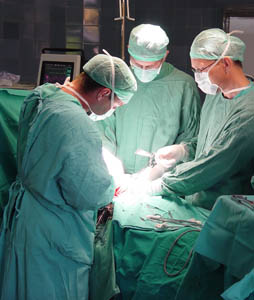Good Dental Health Starts Early
By Dr. Stephanie Chen, Chen Pediatric Dentistry
 According to the American Academy of Pediatric Dentistry, it is recommended that your child’s first dental visit occur at the time of the appearance of the first tooth and no later than the first birthday.
According to the American Academy of Pediatric Dentistry, it is recommended that your child’s first dental visit occur at the time of the appearance of the first tooth and no later than the first birthday.
During this first visit, your pediatric dentist will evaluate your child to determine if he or she is at risk for early dental cavities, also known as dental caries. Early identification and intervention has proven to be very cost-effective in the long run. In addition, demonstrating age-appropriate tooth brushing techniques and evaluating the frequency of future visits are part of your initial discussion with your dentist. Other topics include dental habits such as thumb and pacifier, fluoride status, teething, injury prevention, and diet. By establishing your dental home, you have the foundation for the prevention of dental disease along with a trusted professional to contact in the case of a dental emergency.
Here are some areas to discuss with your pediatric dentist:
Teething: Teething can lead to discomfort, irritability and excessive salivation for some children, while others experience no apparent difficulty. Treatment includes oral analgesics and chilled teething rings. Please note that over-the-counter teething gels are not recommended due to the risk of toxicity in infants.
Oral Hygiene: Begin brushing with the appearance of the child’s first tooth, but be aware that this will cause some children to fuss and cry. Tooth brushing should be performed by the parent twice daily, using an age-appropriate toothbrush and the correct amount of toothpaste. For a child under the age of three, no more than a smear of fluoride toothpaste or a rice grain-sized amount of regular toothpaste is recommended, and no more than a size of a pea for children between the ages of three and six. Children lack the manual dexterity to brush properly until the age of five to seven, so a parent should assist. In addition, parents should begin flossing daily when a child’s teeth begin to touch each other.
Diet: Frequent nighttime and daytime bottle or sippy cup feeding with formula, milk, juice or sugary drinks, and between-meal consumption of sugary snacks such as candy, gummy snacks, cookies, and Fruit Roll Ups, can increase the risk of caries. The American Academy of Pediatrics recommends no more than four to six ounces of fruit juice per day from the ages of one to six. Milk should be served with meals and not offered throughout the day. If your child needs a bottle or sippy cup for a long period of time, fill it with water only. Note that sugar is also found in foods like chips and crackers. Limiting the frequency of these snacks or consuming them only at mealtime can reduce the risk of dental caries.
Dental Habits: Finger/thumb habits and pacifier use can apply forces to the teeth and palate. Weaning an infant of such habits early on can prevent malocclusions (misalignment of teeth) and skeletal changes.
Dental Trauma: Due to the active nature of children, dental trauma is a common occurrence. The most common site for injury is the upper central incisors. Dental follow-up is necessary for dental trauma because a seemingly minor injury may result in permanent tooth damage. By childproofing the home and providing supervision around stairs, playgrounds and furniture, parents can help reduce the risk of dental injuries.
Certainly this is a lot to consider. Fortunately, your pediatric dentist is here to help. After your first visit, you should have an idea of your child’s dental health status, your responsibilities for dental care, and when your next follow-up visit is expected. Bringing your child to the dentist early can lead to a lifetime of good oral care habits and happy dental visits.
Dr. Stephanie Chen has been practicing pediatric dentistry over twenty years. She received her dental degree at The Ohio State University and her pediatric specialty degree at The University of North Carolina at Chapel Hill. For questions, call Chen Pediatric Dentistry at (704) 365-0888.
This blog was produced in partnership with Charlotte Parent. Click here for the original post and other parenting resources.
Winter weather warning:
Hair tourniquets!
 As pediatric surgeons, my partners and I deal with all sorts of seemingly strange conditions in the office and the emergency department. One such condition is what we call a “hair tourniquet.”
As pediatric surgeons, my partners and I deal with all sorts of seemingly strange conditions in the office and the emergency department. One such condition is what we call a “hair tourniquet.”
Anyone who has had blood drawn is familiar with a tourniquet: usually a thick rubber band that is tied tightly around your arm to block the blood flow so your veins swell and they’re easier to see. It turns out a strand of hair or thread can act like a tourniquet as well. With infants and toddlers, the hair or thread can become wound around a toe or other extremity, severely reducing the circulation of blood. Such instances increase in the winter when children are regularly wearing socks, especially if the socks are not changed daily. We also see this condition when babies first come home from the hospital, when moms begin to lose some of the extra hair they grew during pregnancy.
The longer the tourniquet stays in place, the more severe the condition becomes. Early signs are mild swelling and sometimes increased fussiness, and are easy to miss. But as the blood flow continues to be inhibited, the toe becomes increasingly swollen, painful and discolored, often like a bruise. If the tourniquet is not relieved, it could result in permanent damage. It is usually when the swelling gets worse that most parents first become aware of the problem, because their child becomes very uncomfortable and upset. Even if you can’t see the hair itself, it doesn’t mean it’s not there. The swelling can often obscure the very fine thread or hair causing the problem. Occasionally, by the time the toe gets to this stage, it may be numb, and the fussiness will have passed.
If your child demonstrates signs and symptoms of a hair tourniquet, even if you can’t see it, it’s important to bring her to the pediatrician’s office, urgent care or emergency department immediately to avoid permanent complications from decreased blood flow. Parents often feel terrible about not having noticed the tourniquet sooner, but the truth of the matter is that once the swelling begins, the condition can progress rapidly because the tourniquet gets progressively tighter from the swelling, resulting in further inhibition of blood flow and even more swelling.
Fortunately the treatment is simple: cutting and removing the tourniquet to improve blood flow. However, it can sometimes take several hours or days for the color and swelling to improve. Infection, characterized by persistent redness and swelling, is another complication.
Remember, if you have any questions at all, you can call the office of Pediatric Surgical Associates. We are always available to discuss and address parents’ concerns.
This blog was produced in partnership with Charlotte Parent. Click here for the original post and other parenting resources.
Choosing the Right Physician for your Child
When you first chose a pediatrician for your child, you probably did a fair bit of research. You may have asked friends for recommendations, looked up “best general practitioner” or “best pediatrician” on the internet, or called your insurance carrier for a list of providers to consider. Once you had the facts, you made the most informed decision you could.
It may feel different when you are faced with an emergency or require a specialist for a pressing healthcare issue. You may feel compelled to make a quick decision under pressure. You may feel that you have only one option for an uncommon or complex condition. But that is not true.
Here are a few things you can do to empower yourself and provide the best care for your child:
First of all, ask the physician making the referral for you if that is the specialist he or she would use for his or her own children. Then, when you meet the new physician or surgeon, ask questions directly related to the care you seek and be sure that you are completely comfortable with the answers. Treat it like an interview, and don’t be shy about asking that doctor about his or her qualifications. Experienced doctors should be willing to talk openly and offer specific examples of their experience with a specific issue or situation. Doctors should not be insulted or make you feel bad for asking. They know this is a big decision you’re making.
Often, important questions aren’t related solely to the physician you meet, but to the other members of the group as well. If the medical problem you’re facing requires ongoing care (i.e., admission to a hospital), then it’s likely that your child will at some point be cared for by at least one of the physician’s partners. It is important to find out: What is the reputation of the group as a whole? Do the physicians work and communicate closely with each other? Do the physicians who provide coverage for your doctor have the same qualifications and experience?
When you choose a physician, you’re often choosing his or her group as well, so it is the collective experience of the group that is most critical to your child’s care in a complex medical situation. Many conditions are rare in children, so even though individual physicians of the group may have only seen the problem a few times, the collective experience of the group may be quite extensive.
Ask as many questions as many times as you feel necessary, to understand each step in the process. Take written notes if you need to share information with your spouse. Then ask yourself if you trust the opinion you have been given. If you are still not sure, ask for a second opinion. Again, you will not be insulting a good physician when you make this request.
Remember that even if you’re in the emergency room in the middle of the night, you can ask these questions. The only exception is if your child needs an immediate, life-saving intervention. In that case, please defer to the emergency department specialists. Once your child has been stabilized, make sure you receive a clear explanation of the situation.
Your child gets your best every day. And your child deserves the best of your physician, too.
This blog was produced in partnership with Charlotte Parent. Click here for the original post and other parenting resources.
Advocating the Best Care for Your Child
As a parent, your job is to care for your child, keep your family safe and be prepared to make the best decisions for your children, especially in the face of a medical event or emergency. Every day, parents across the country are faced with seeking treatment for an acute medical need for their child. They check in at urgent cares, emergency rooms and pediatrician offices, and begin the journey of navigating the landscape of insurance companies, doctors and hospitals. The trip can be daunting, especially if you are unfamiliar with the healthcare world. It helps to have a friend in healthcare, one who can guide you through the process and give you inside knowledge. Consider me that friend.
The key to getting good healthcare is to be patient and persistent, and ask a lot of questions along the way. Many hospitals employ their own physicians, and insurance companies are contracted with certain physicians they consider preferred providers (usually for financial reasons). The hospitals and insurance companies often encourage their primary care, emergency department and urgent care physicians to offer referrals to their specialists first. However, you are not limited to these initial options. Most insurance companies will allow you to get a second opinion, and physicians who are asked directly will provide you with who they think is best, regardless of hospital or insurance affiliation. Making these requests may seem awkward at first, but it’s worth it for your family’s well-being and your peace of mind.
When you request a second opinion, you will find that your options for care may expand greatly. In the greater Charlotte area, there are many independent physician specialty groups. Groups like these are able to treat patients at more than one hospital, and often can help you choose the best place to receive care for your child. Patients always have access to groups like these, but sometimes you need to be very specific in your request.
In an increasingly complex healthcare environment, you are the best advocate for your child. Patient choice is essential to good patient care. Do not be afraid to ask questions; a good physician will never be offended by that.
This blog was produced in partnership with Charlotte Parent. Click here for the original post and other parenting resources.
THAT HAPPENS?
Holiday Safety Tips from PSA
Most of us know the typical safety information that keeps us out of trouble during the holidays, but there are many unusual hazards surgeons fix during December and January. From internal “battery burns” to thumbtack inhalation, we pediatric surgeons have seen it all.
Read the dangers below and be mindful this holiday season! If something does go wrong, the doctors of Pediatric Surgical Associates are on-call 24/7 and always available, even on Christmas Eve/Day and New Year’s Eve/Day.
- Inhaling thumbtacks. When hanging garland or stockings, you might put a thumbtack in your mouth if you don’t have a free hand. When children imitate or offer to help, they can forget and sneeze or “breathe in,” lodging the tack in their windpipes.
- Small, round party food. Popcorn and peanuts are a favorite snack for holiday parties. If little ones are around, keep a sharp eye out for what your children are eating. Anything that is small and round can be a choking hazard for children under four.
- Toys with magnets. Magnetic letters and numbers are great learning gifts to give. However, if children mouth their toys, they can dislodge the magnets and swallow them. Once ingested, magnets still attract one another. If they end up in the wrong spot, they can connect and pinch whatever is in the middle, causing tissue damage.
- Toys with batteries. Any toy that contains a small disc “watch-style” battery can be a hazard, if the battery is ingested. If these batteries leak, they can cause chemical burns internally that can only be repaired with surgery.
- Poisonous plants. Did you know that holly, mistletoe and poinsettias can be poisonous for pets and small children? Though perfectly pretty, keep live greenery out of reach!
- Hair tourniquets on toes. During cold weather, babies and young children can get hair or loose thread from inside their socks wound around their toes. If unnoticed and left for several hours, it can cut off circulation to the toe!
If Pediatric Surgical Associates doesn’t see you, which is a good thing, have a safe and happy holiday season!
What is A Pediatric Surgeon?
 If you have a child who needs medical care or needs a specific medical operation, a Charlotte pediatric surgeon will do the job. A pediatric surgeon is a licensed physician who graduated from a medical school and who has completed years of professional residency training for specialization in surgical aspect. They dedicate many years to learning about medical care for children and surgical procedures to diagnose, treat and perform surgery. This encompasses the preoperative, operative and postoperative management of young patients who needs treatment.
If you have a child who needs medical care or needs a specific medical operation, a Charlotte pediatric surgeon will do the job. A pediatric surgeon is a licensed physician who graduated from a medical school and who has completed years of professional residency training for specialization in surgical aspect. They dedicate many years to learning about medical care for children and surgical procedures to diagnose, treat and perform surgery. This encompasses the preoperative, operative and postoperative management of young patients who needs treatment.
The spectrum of patients cared for by a Charlotte pediatric clinic includes infants, toddlers, school ages, teenagers and adolescents. They also perform medical surgery on fetuses with an operation called “neonatal surgery.” There are also general surgeons who are qualified to perform operations from young patients to the elderly. A pediatric surgeon differs in the sense that they specialize their care exclusively for younger patients.
A reliable pediatric surgeon has both a qualification and certification from a national surgical board. This certification is approved by the American Board of Medical Specialties. Before acquiring this certification, aspiring surgeon should complete a residency training program and should also pass an examination which focuses on a particular specialty.
You can also distinguish a Charlotte pediatric surgeon from his title. A surgeon’s formal title “M.D.” stands for “Medical Doctor” which is also an indication that a surgeon is board certified and that he or she passed an evaluation of their surgical skills. One example of this is: “Dr. Andrew M. Schulman, M.D. Board Certified.”
Pediatric Surgical Treatments
A pediatric surgeon performs a wide variety surgical procedures, including:
- Minimally invasive surgery
- Gastroschisis
- Pulmonary Sequestration
- Chest Wall Deformities
- Appendicitis
- Removal of masses, nodes and cysts
These are just few of variety of medical disorders of children that needs medical management from a Charlotte pediatric surgeon.
A child patient does not always have the ability to say what they feel considering their ability to speak and their age. They often tend to get scared and feel uncomfortable with some procedures done to them. A pediatric surgeon is also specially trained to cope with the behavior of children. They know how to make young patients cooperate and feel comfortable in the medical environment. If you are referred to Charlotte pediatric clinic you can be rest assured that they uphold the highest standards in surgical care.
 At the most recent meeting of the American Pediatric Surgical Association (APSA), pediatric surgeons from all over the world gathered to discuss the latest in pediatric surgical care and research. Pediatric Surgical Associates (PSA) is proud to announce that its project, “HOME INTRAVENOUS VERSUS ORAL ANTIBIOTICS FOLLOWING APPENDECTOMY FOR PERFORATED APPENDICITIS IN CHILDREN, A RANDOMIZED CONTROLLED TRIAL,” won best clinical presentation at this prestigious meeting.
At the most recent meeting of the American Pediatric Surgical Association (APSA), pediatric surgeons from all over the world gathered to discuss the latest in pediatric surgical care and research. Pediatric Surgical Associates (PSA) is proud to announce that its project, “HOME INTRAVENOUS VERSUS ORAL ANTIBIOTICS FOLLOWING APPENDECTOMY FOR PERFORATED APPENDICITIS IN CHILDREN, A RANDOMIZED CONTROLLED TRIAL,” won best clinical presentation at this prestigious meeting.
Perforated appendicitis occurs when appendicitis has progressed to the point where the appendix ruptures and leaks infection into the belly. Without post-operative antibiotic therapy, children are at high risk for a serious intra-abdominal infection.
Surgeons have debated for years whether home intravenous or oral antibiotic therapy is the best to prevent these infections. In conjunction with Dr. Todd Heniford of Carolinas Medical Center and building on studies out of Children’s Mercy Hospital in Kansas City, we studied the best and most cost-effective way of preventing these infections.
![]() We are pleased to report that our project confirmed that children who have had an appendectomy for perforated appendicitis can be sent home with oral antibiotics with no difference in the development of an abscess, and at a much lower cost, than if they were sent home on intravenous antibiotic therapy.
We are pleased to report that our project confirmed that children who have had an appendectomy for perforated appendicitis can be sent home with oral antibiotics with no difference in the development of an abscess, and at a much lower cost, than if they were sent home on intravenous antibiotic therapy.
Pediatric Surgical Associates works to improve patient care and decrease medical costs in Charlotte, NC. We are grateful to have had this project recognized by APSA, and look forward to contributing to improving children’s surgical care in the future.













